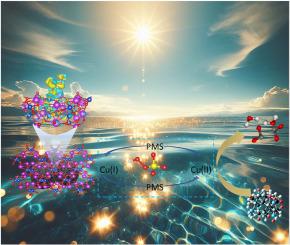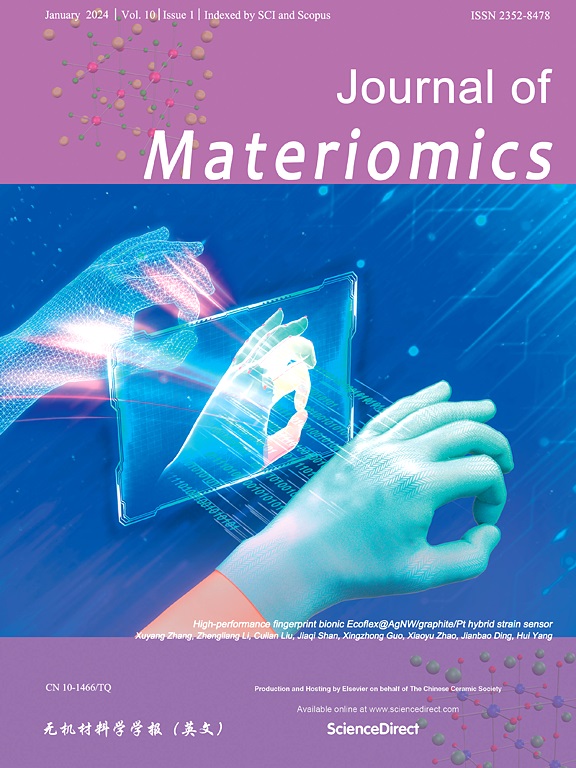Unveiling the structure–activity relationships of tetracycline degradation by photocatalytic activation peroxymonosulfate of CuBi2O4 microspheres: DFT calculation and mechanism insight
IF 8.4
1区 材料科学
Q1 CHEMISTRY, PHYSICAL
引用次数: 0
Abstract
Achieving efficient photocatalytic activation of peroxymonosulfate (PMS) degradation of pollutants through the regulation strategy of surface microstructure in catalysts remains a challenge. Herein, CuBi2O4 nanorods (CBO NRs) and CuBi2O4 microspheres (CBO Ms) were synthesized by simply regulating the alkalinity of the reaction solvent. Under full–spectrum irradiation, CBO Ms exhibited remarkable photocatalytic performance, removing 92.48% of tetracycline (TC) within 12 min, with the reaction rate constant reaching 0.2135 min−1, which is approximately 2.7 times that of CBO NRs (0.0798 min−1). The exposure of oxygen vacancies on the surface of CBO Ms significantly promoted the generation and migration of photogenerated carriers internally, accelerated charge accumulation at the Cu active sites on the surface, and thereby enhanced the adsorption of CBO Ms on PMS. The charge density difference results confirmed the rapid transference of surface–enriched electrons to the PMS, facilitating further activation of PMS. Radical quenching experiment and EPR testing verified that both radical (SO4•−, •OH) and non–radical (1O2) pathways were involved in the reaction system. This study offers novel insights into the design of catalysts for the photocatalytic activation of PMS to efficiently degrade environmental pollutants.

揭示 CuBi2O4 微球光催化活化过硫酸盐降解四环素的结构-活性关系:DFT 计算与机理研究
通过调节催化剂的表面微结构来实现高效光催化激活过一硫酸盐(PMS)降解污染物仍然是一项挑战。本文通过简单调节反应溶剂的碱度,合成了 CuBi2O4 纳米棒(CBO NRs)和 CuBi2O4 微球(CBO Ms)。在全光谱辐照下,CBO Ms表现出显著的光催化性能,在12分钟内去除92.48%的四环素(TC),反应速率常数达到0.2135 min-1,约为CBO NRs(0.0798 min-1)的2.7倍。CBO Ms 表面氧空位的暴露极大地促进了光生载流子在内部的生成和迁移,加速了表面 Cu 活性位点的电荷积累,从而增强了 CBO Ms 在 PMS 上的吸附。电荷密度差结果证实了表面富集的电子迅速转移到 PMS 上,促进了 PMS 的进一步活化。自由基淬灭实验和 EPR 测试证实,反应体系中同时存在自由基(SO4--、-OH)和非自由基(1O2)途径。这项研究为设计光催化活化 PMS 以高效降解环境污染物的催化剂提供了新的见解。
本文章由计算机程序翻译,如有差异,请以英文原文为准。
求助全文
约1分钟内获得全文
求助全文
来源期刊

Journal of Materiomics
Materials Science-Metals and Alloys
CiteScore
14.30
自引率
6.40%
发文量
331
审稿时长
37 days
期刊介绍:
The Journal of Materiomics is a peer-reviewed open-access journal that aims to serve as a forum for the continuous dissemination of research within the field of materials science. It particularly emphasizes systematic studies on the relationships between composition, processing, structure, property, and performance of advanced materials. The journal is supported by the Chinese Ceramic Society and is indexed in SCIE and Scopus. It is commonly referred to as J Materiomics.
 求助内容:
求助内容: 应助结果提醒方式:
应助结果提醒方式:


